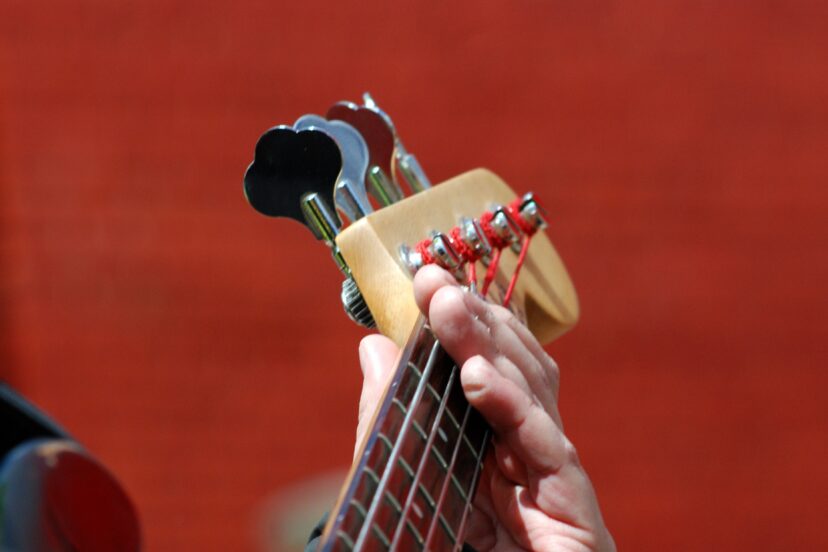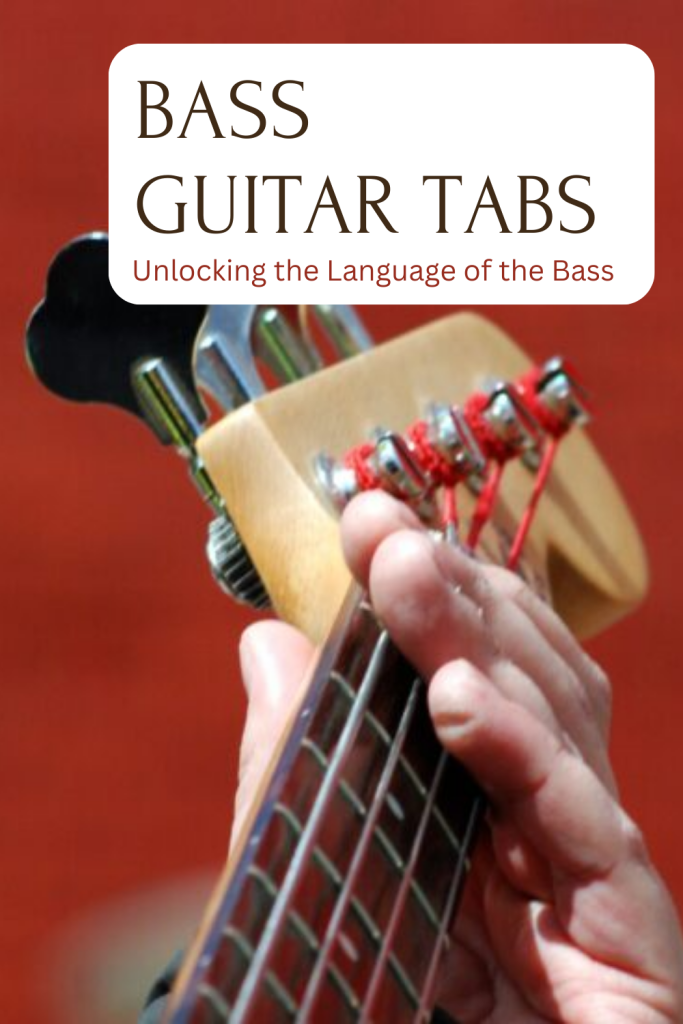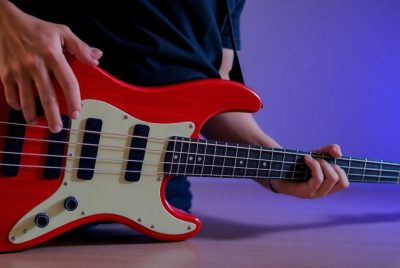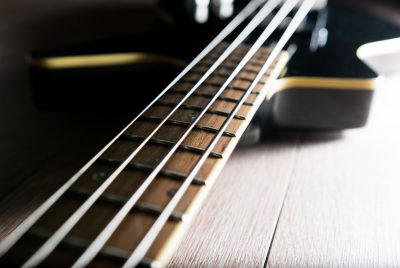Bass Guitar Tabs: Unlocking the Language of the Bass
I stress enough the power of bass guitar tabs as a tool for learning and playing music. In this article, I will guide you through the world of bass guitar tabs, explaining what they are, their benefits, and how to effectively use them to expand your musical repertoire. Whether you’re a beginner or an experienced player, understanding bass guitar tabs will unlock a wealth of possibilities for your bass playing journey.
What are Bass Guitar Tabs?
Bass guitar tabs, or tablature, provide a simplified and visual representation of bass guitar music. Instead of traditional sheet music notation, tabs use numbers, symbols, and lines to indicate which strings and frets to play. Tabs are a popular and accessible method for learning and sharing bass guitar music, allowing players to quickly grasp songs without extensive music theory knowledge.
Benefits of Using Bass Guitar Tabs
Using bass guitar tabs offers several advantages for bass players of all skill levels:
Easy to Understand
Tabs provide a straightforward way to understand and play bass guitar music, particularly for those who may not be well-versed in reading sheet music. The visual nature of tabs simplifies the learning process and allows players to focus on the finger placement and timing of the notes.
Quick Song Learning
Tabs allow for rapid song learning, enabling bassists to pick up their favorite songs without the need for extensive musical knowledge or notation skills. With tabs, you can learn the basslines of your favorite songs efficiently and start playing along in no time.
Play by Ear
Tabs can be a valuable tool for developing your ability to play by ear. By following the tablature and listening to the song simultaneously, you can train your ears to recognize patterns, note sequences, and melodies, enhancing your overall musicianship.
Reading and Interpreting Bass Guitar Tabs
To effectively use bass guitar tabs, it’s essential to understand how to read and interpret them. Here’s a step-by-step guide:
String Orientation:
Tabs consist of horizontal lines representing the strings of the bass guitar, with the thickest string at the bottom and the thinnest string at the top.
Fret Numbers:
Numbers on the lines indicate which fret to play on a specific string. A “0” represents an open string, while higher numbers indicate the corresponding fret.
Rhythmic Timing:
Tabs may include rhythmic indicators, such as dashes or symbols, to indicate note duration. Pay attention to these indicators to maintain the correct timing while playing.
Vertical Alignment:
When multiple numbers are vertically aligned, play them simultaneously as a chord or a stacked note. This indicates that you should press down multiple strings and frets at the same time to create the desired chord or harmony.
Repeat Signs:
Tabs may include repeat signs, such as “||:” and “:||,” to indicate sections of music that should be played multiple times. Pay attention to these signs and repeat the indicated section accordingly.
Bar Lines: Vertical lines separate the tabs into measures, helping to organize the music and indicate the rhythmic structure of the song.
Understanding Tab Notations
In addition to numbers and lines, bass guitar tabs may include various notations and symbols to provide additional information about the music. Understanding these notations will enhance your interpretation of the tabs:
Hammers and Pull-offs:
Notations like “h” and “p” indicate hammer-ons and pull-offs, respectively. A hammer-on is when you play a note by hammering your finger onto a higher fret without plucking the string again. A pull-off is the opposite, where you release a finger to produce a lower note.
Slides:
Slides are denoted by a “/” or “\” symbol between two numbers. It indicates that you should smoothly slide your finger up or down the string, connecting the two indicated frets.
Bends:
Bends are indicated by an upward arrow (↑) or the letter “b” followed by the desired pitch. Bends add expression and pitch variation to the notes you play.
Vibrato:
Vibrato is denoted by a squiggly line (~) above the note. It indicates that you should add a slight pitch fluctuation by rapidly oscillating your finger on the fretted note.
Palm Muting:
Palm muting is represented by “PM” or the letters “P.M.” above the tab. It instructs you to lightly rest the edge of your picking hand against the strings near the bridge to create a muted and percussive sound.
Common Symbols and Techniques in Bass Guitar Tabs
As you delve deeper into bass guitar tabs, you’ll encounter specific symbols and techniques commonly used to enhance the playability and expressiveness of the music. Familiarize yourself with these symbols:
Slap and Pop:
The slap technique is represented by a “S” above the tab, and the pop technique is indicated by a “P” above the tab. These symbols instruct you to use your thumb (slap) or fingers (pop) to produce percussive and melodic sounds on the bass strings.
Dead Notes:
Dead notes, also known as muted notes, are marked with an “X” on the tab. They indicate that you should press the string against the fret but not fully depress it to produce a muted sound.
Harmonics:
Harmonics are represented by a small diamond-shaped notehead or a circled number above the tab. They indicate locations on the strings where you can lightly touch the string to produce a chiming, bell-like tone.
Tapping:
Tapping is denoted by a “T” above the tab. It indicates that you should use your picking hand to tap the string at a specified fret while fretting other notes with your other hand simultaneously.
Tips for Effective Practice with Bass Guitar Tabs
To make the most of your practice sessions with bass guitar tabs, consider the following tips:
Start Slow:
Begin by playing the tabs at a comfortable tempo, focusing on accuracy and precision. Gradually increase the speed as you become more comfortable with the fingerings.
Isolate Difficult Sections:
If you encounter challenging sections in a tab, isolate them and practice them separately. Break them down into smaller segments, and gradually build up to playing the entire section smoothly.
Experiment with Fingerings:
While tabs provide fingerings for specific notes, feel free to experiment with alternative fingerings that feel more comfortable and efficient for you. Adapt the fingerings to suit your playing style and hand anatomy.
Listen to the Original Recording:
Whenever possible, listen to the original recording of the song you’re learning with tabs. Pay attention to the nuances, dynamics, and articulations used by the bassist. This will help you capture the essence of the song and replicate the feel and style accurately.
Combine Tabs with Ear Training:
As you progress with tabs, continue to develop your ear training skills. Try to identify melodies, chord progressions, and basslines by ear alone. This will deepen your understanding of music and improve your ability to play without solely relying on tabs.
Practice with a Metronome:
Use a metronome or drum tracks to develop a sense of timing and groove while practicing with tabs. Playing in time is crucial for creating a solid foundation and playing with other musicians.
Variety in Repertoire:
Explore a diverse range of songs and genres using tabs. This will expose you to different playing styles, techniques, and musical approaches, helping you grow as a well-rounded bassist.
Expanding Your Repertoire with Tabs
Tabs provide an excellent platform for expanding your repertoire as a bassist. Here are some effective ways to broaden your musical horizons using tabs:
Learning Songs:
Using tabs, learn songs from various genres and artists. Start with simpler tunes and gradually progress to more complex compositions. This process allows you to develop your technique, musicality, and understanding of different styles.
Studying Influential Bassists:
Focus on learning basslines from influential bassists who have made a significant impact on the instrument. Studying their playing style and techniques will broaden your musical vocabulary and inspire your own bass playing.
Exploring Different Genres:
Dive into different genres of music using tabs. Experiment with rock, jazz, funk, blues, reggae, and more. Each genre has its distinct characteristics, rhythms, and playing techniques, providing a wealth of learning opportunities.
Challenging Yourself:
Push your boundaries by taking on more technically demanding songs. Embrace the challenge and work on pieces that require you to stretch your skills and expand your technique. This will foster growth and help you reach new levels of proficiency.
Using Tabs for Learning Songs
Tabs are a fantastic resource for learning songs quickly and accurately. Here’s how you can effectively use tabs to learn your favorite songs:
Choose Reliable Sources:
Select reputable websites, books, or online communities known for providing accurate and well-structured bass guitar tabs. It’s essential to use reliable sources to ensure the tabs are correct and aligned with the original recordings.
Break it Down:
Start by breaking the song into sections. Learn one section at a time, mastering the notes, rhythms, and techniques before moving on to the next section. This approach allows for focused and efficient learning.
Analyze the Structure:
Analyze the song’s structure, identifying the verse, chorus, bridge, and any other distinct sections. Understanding the song’s form will help you anticipate changes and transitions while playing.
Listen and Play Along:
Listen to the song while following along with the tabs. Play along with the recording, matching the timing and phrasing. This will help you internalize the song and develop your sense of groove.
Focus on Details:
Pay attention to subtleties such as slides, bends, articulations, and dynamic variations. These nuances add flavor and authenticity to your performance, making it sound closer to the original recording.
Make it Your Own:
While learning songs with tabs, don’t be afraid to add your own personal touch. Once you’ve mastered the original bassline, feel free to experiment with variations, embellishments, and improvisations. This allows you to infuse your unique style and musicality into the song.

Writing and Sharing Your Own Bass Guitar Tabs
Creating your own bass guitar tabs is a rewarding way to document your original compositions or arrangements. Here are some steps to help you write and share your own tabs:
Transcribe Your Basslines
Start by transcribing your basslines onto tablature. Listen to your compositions carefully, identifying the notes, rhythms, and techniques you’re using. Notate them on the tabs accurately.
Organize the Structure
Determine the structure and form of your composition. Use bar lines and repeat signs to indicate sections that repeat or vary throughout the piece. This ensures clarity and readability for others who may use your tabs.
Add Details and Notations
Include specific details and notations to enhance the accuracy and expressiveness of your tabs. Use symbols for techniques such as slides, bends, hammer-ons, and pull-offs. These notations will guide others in replicating your intended playing style.
Proofread and Test
Proofread your tabs to ensure they are error-free and easy to follow. Play through your tabs to verify their accuracy and playability. Make any necessary revisions to ensure they accurately represent your composition.
Share and Collaborate
Share your tabs with fellow musicians, friends, or online communities that appreciate bass guitar music. It’s a great way to collaborate, receive feedback, and inspire others with your original basslines.
Finding Reliable and Accurate Bass Guitar Tabs
When it comes to finding bass guitar tabs, it’s crucial to rely on trustworthy sources that provide accurate and reliable tablature. Here are some tips for finding high-quality tabs:
Reputable Websites
Explore well-established websites dedicated to providing bass guitar tabs. Look for sites that have a robust community of musicians, regularly updated content, and a reputation for accuracy.
Official Songbooks
Many artists and bands release official songbooks or tablature books that contain accurate transcriptions of their music. These books are generally considered reliable and provide an authentic representation of the artist’s basslines.
User Reviews and Ratings
Check user reviews and ratings when accessing tabs from online platforms. Look for positive feedback and comments regarding accuracy and usability. Users’ experiences can give you an idea of the quality of the tabs provided.
Transcribe Yourself
If you can’t find reliable tabs for a specific song, consider transcribing the bassline yourself. Use your ears, musical knowledge, and observation skills to transcribe the notes and techniques accurately. Engage with fellow musicians and bassists who may have transcriptions or insights into specific songs. Collaborating and sharing knowledge within the musical community can lead to valuable resources and accurate tabs.
Avoiding Pitfalls and Developing Musicality
While bass guitar tabs are an excellent learning resource, it’s essential to be aware of their limitations. Here are some pitfalls to avoid and strategies to develop your musicality:
Overreliance on Tabs
While tabs provide an accessible way to learn songs, avoid solely relying on them. Use tabs as a learning tool, but also strive to develop your music theory knowledge, ear training skills, and improvisational abilities.
Contextual Understanding
Tabs don’t always capture the context or subtleties of a bassline. Listen to the song in its entirety and understand the role of the bass within the overall composition. This broader understanding will inform your interpretation and help you play with musicality.
Musical Interpretation
Use tabs as a starting point but strive to inject your musical interpretation into the basslines. Experiment with variations, dynamics, and rhythmic accents to make the music come alive and showcase your personal style.
Ear Training and Music Theory
Dedicate time to ear training exercises and studying music theory. Developing your ear will enable you to recognize melodies, chord progressions, and basslines more accurately. Music theory knowledge will deepen your understanding of harmony and help you make informed musical choices.
Collaborate and Jam with Others
Engaging in musical collaborations and jam sessions with other musicians is invaluable for developing your musicality. It allows you to interact, improvise, and respond to the musical cues of others, enhancing your overall playing and sense of musical connection.
Remember, while bass guitar tabs provide a convenient way to learn and play music, they should be seen as a tool to support your musical growth. Strive for a balance between using tabs and developing your musical skills to become a well-rounded and expressive bassist.
Conclusion
Bass guitar tabs serve as an essential language for bassists, unlocking a world of music and expanding your playing repertoire. Whether you’re learning songs, sharing your compositions, or exploring new techniques, tabs provide a visual and accessible way to navigate the bass guitar.
By understanding how to read, interpret, and utilize bass guitar tabs effectively, you can enhance your playing, broaden your musical horizons, and develop your own unique style. Embrace the benefits of tabs, but remember to complement your learning with ear training, music theory, and collaborative experiences to become a well-rounded and versatile bassist.
So, grab your bass, immerse yourself in the world of tabs, and let the music flow from your fingertips. Whether you’re strumming iconic basslines or creating your own compositions, let the language of bass guitar tabs guide you on an exciting musical journey.
FAQs
Q1: Can I rely solely on bass guitar tabs for learning the instrument?
While bass guitar tabs are a valuable learning resource, it’s important to supplement them with music theory knowledge, ear training, and a holistic understanding of bass playing. Strive for a balance between using tabs and developing your overall musicianship.
Q2: How accurate are the bass guitar tabs available online?
The accuracy of online bass guitar tabs can vary. It’s advisable to use reputable websites with positive user reviews and ratings. Additionally, cross-referencing multiple sources and using your ears to verify the accuracy is a good practice.
Q3: Can I modify bass guitar tabs to suit my playing style?
Absolutely! Bass guitar tabs can be a starting point for your own interpretation and musical expression. Feel free to experiment with variations, dynamics, and personal touches to make the music your own.
Q4: Can I write my own bass guitar tabs for songs I create?
Yes, writing your own bass guitar tabs for your compositions is a great way to document and share your music. Notate the basslines accurately, including details and techniques, to provide a clear representation of your intended music.
Q5: How can I improve my musicality while using bass guitar tabs?
To enhance your musicality, focus on developing your ear training skills, studying music theory, collaborating with other musicians, and striving for a deeper understanding of the context and nuances of the music you play. Incorporate improvisation and experimentation into your practice routine to develop your own musical voice.





